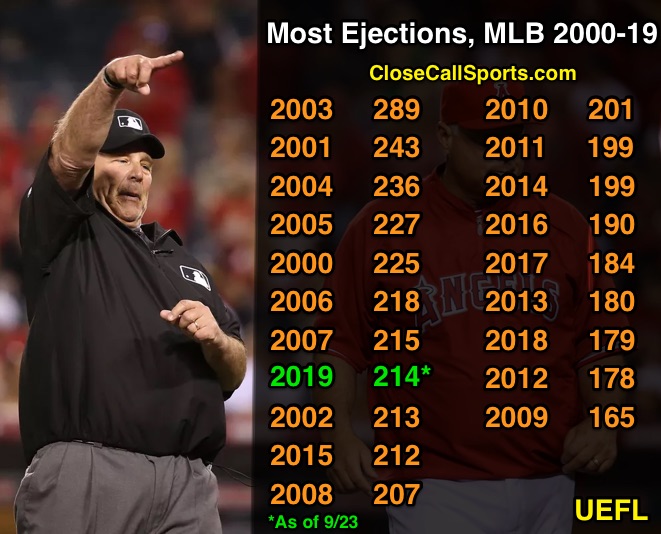
Using Bob Davidson to explain further, between 19 he umpired 2,634 games and ejected 124 people, or in around five percent of the games he umpired. There is ejection data going back to 1889, and it's intriguing to see how the numbers move over time. I arbitrarily set the filter to 1990, but it can be moved to show as few or as many years as desired. The Umpires tab shows the number of ejections made by individual umpires along with the number of games umpired. There are seven tabs, and the first four follow the same format. This is the data viz of all recorded ejections in baseball history, with plenty of explanation to follow:
Mlb total manager ejections by year trial#
I use charts and graphs to illuminate and as shorthand - in my former life as a pharma sales rep, I could discuss a clinical trial with physicians but saw the light go on if I had a chart I could reference that summarized the pertinent data. One of the other things I've discovered in the past year is using Tableau data visualizations, and I use them not to junk up a post but because a picture really can say a thousand words, if used correctly. I can't define "new" in this context, but it made me feel better at least to think that this data hasn't been sitting around since the mid-1990s just waiting for me to find it. The newest section of data now available on the website relates to umpires. I've written about this in the past, and as I was updating data from the 2014 season I clicked on the page that listed the data credits: In addition to games and position I saw something I'd always been interested in but had a hard time finding, let along quantifying and analyzing - data on ejections and reasons why. Some time last year I stumbled across a section I had never seen before titled "Umpires". Without the compendium of information they've compiled, I (and many others) can't do the type of analysis I do.

More information on their history can be found here, and my point isn't so much to proselytize for the work they do (even though I should) as much as acknowledge and thank them for doing it. Retrosheet is the spine upon which most modern baseball databases are built, the core box scores and play-by-play descriptions that are the basis of modern measures. When those brief moments of inspiration and lucidity occur, it's nice to acknowledge those people. When thought about for any length of time the obvious conclusion is reached that someone had to do the heavy lifting to make that information available. It's so easy to take things for granted - our families, spouses, children, and so on come immediately to mind, but also assuming the wealth of baseball data available not only was always there but was archived with no effort.


 0 kommentar(er)
0 kommentar(er)
